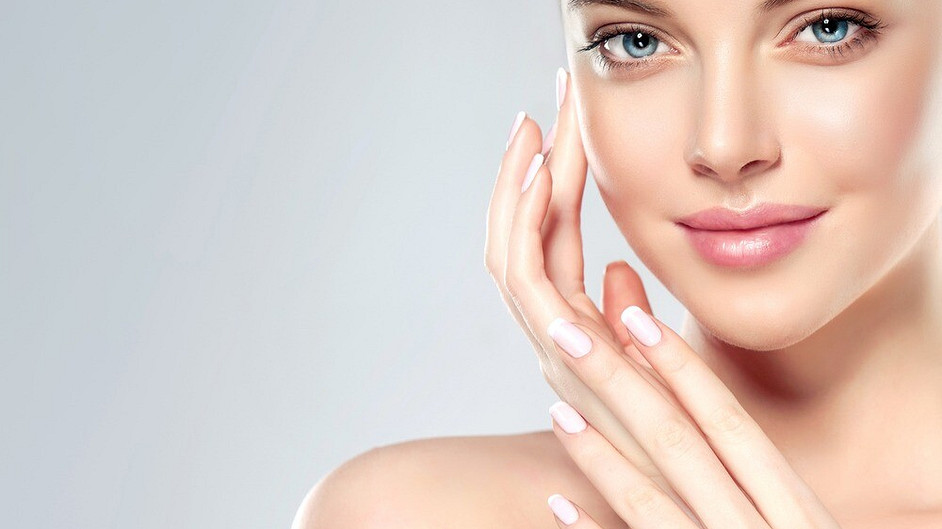
Aqua peeling refers to hardware facial cleansing, which are less traumatic and virtually painless procedures than mechanical cleansing, but no less effective. Peeling promotes rejuvenation, deep cleansing, as well as eliminating minor imperfections of the facial skin.
Aqua peeling procedure
The aqua peeling procedure is carried out using a special device that has several nozzles that regulate the supply of air and saline solution.
Aquapeeling can solve the following skin problems/
- Remove small expression wrinkles.
- Saturate the skin with oxygen.
- Improve blood circulation , metabolism.
- Start regeneration processes in the skin.
- Improve the synthesis of collagen and hyaluronic acid.
- Moisturize the skin, increase its elasticity.
- Restore the skin to a healthy appearance.
A saline solution, which is selected individually, may contain hyaluronic acid, antibacterial components effective in combating acne and other inflammatory processes, and various vitamin complexes. Aqua peeling is used not only to solve skin problems, but also to get rid of excess fat in the thighs and buttocks and eliminate cellulite.
Indications for use
Aqua peeling is indicated in the following cases.
- For oily and combination skin.
- For enlarged pores and blackheads.
- For scars and scars due to acne.
- For unhealthy complexion, dehydration of the skin.
- For cellulite.
- For a high pain threshold, intolerance to mechanical facial cleansing.
li>
The aqua peeling procedure is considered painless, so the use of local anesthetics during its implementation is not required. During the process, the patient may only feel a slight tingling sensation. The frequency of the aqua peeling procedure is usually selected individually by a cosmetologist, taking into account all the characteristics of the patient’s skin.
Contraindications
Despite the fact that aqua peeling is considered a gentle, painless procedure, it is not recommended for the following problems with leather.
- Vessels located too closely, rosacea (vascular mesh on the face).
- The presence of acne, as well as various skin irritations, inflammatory processes.
- Too dry or hypersensitive facial skin.
- Tumors.
- Demodex (subcutaneous mite).
Procedure procedure
The aquapeeling procedure usually takes place in three stages.
1. Preparatory stage
The skin is prepared for the procedure: it is cleansed using special lotions, gels, foams or milk to remove decorative cosmetics, surface impurities and sebum. After which the skin is steamed using steam and special warming gels to expand the pores.
2. Aqua peeling.
Direct facial treatment using a special device with interchangeable attachments that perform various functions. First, water is sprayed onto the skin to moisturize it, and thereby subsequently improve the absorption of trace elements from the serum solution. The skin is treated in circular, smooth but quick movements, moving from the forehead to the chin, avoiding the area around the eyes. Next, saline solution is sprayed along the massage lines, carefully working each area with the same rotational movements.
3. The final stage
At the end of the procedure, the serum is not removed from the face so that it penetrates deeper into the skin and permeates its deeper layers. Finally, special care products with a soothing and nourishing effect are applied to the skin.
The whole procedure takes no more than an hour. Aqua peeling is usually carried out in a course of 6-10 procedures with a break between procedures of one week. It is also good as an express procedure before an important event to improve skin color and tighten it.
Pros and cons of the procedure
Aqua peeling is a painless procedure that does not injure the skin and therefore does not having a recovery period, which will cleanse the face and give it a healthy, fresh look. Thanks to aqua peeling, you can not only get rid of blackheads and excess subcutaneous fat, but also:
- restore and improve microcirculation of the skin and lymph;
- improve metabolic processes in the skin;
- reduce facial swelling;
- reduce the production of subcutaneous fat, get rid of oily shine;
- narrow pores;
- smooth out fine wrinkles;
- improve complexion, making it healthier.
But despite such a number of advantages, this procedure still has a number of significant disadvantages:
- it does not cleanse pores effectively enough, so it is not suitable for problem skin. This is a fairly superficial care procedure that requires a combination with more effective facial cleansing methods, such as traditional mechanical cleansing, to achieve the best results and in the presence of serious skin problems.
- gives a short-term result – even with maintenance care, pores quickly become clogged, and the procedure must be repeated.
- This is only a cosmetic procedure that temporarily eliminates the external manifestations of the problem, and does not solve them from the inside.

